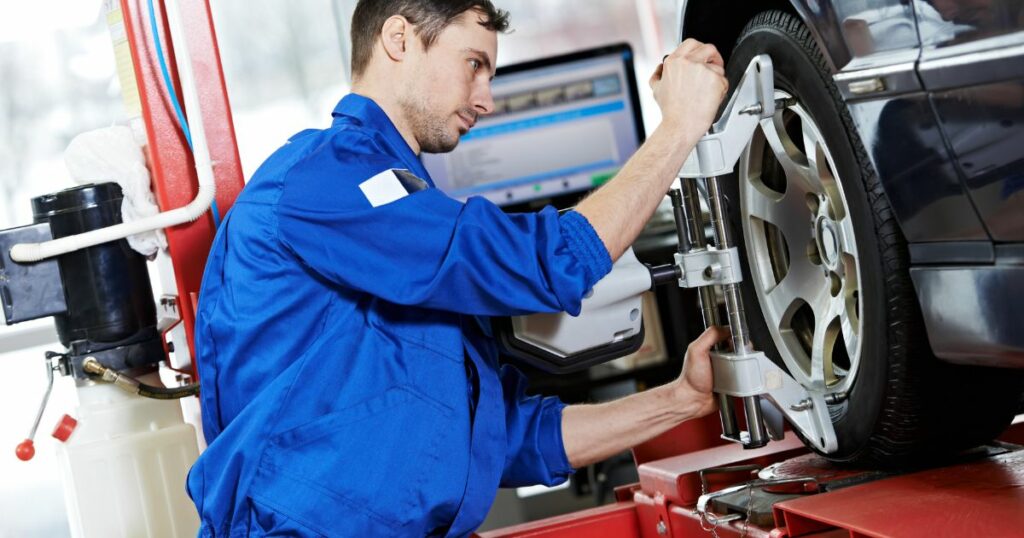What Are Wheel Alignments?
Have you ever experienced difficulty steering your vehicle or noticed uneven tire wear?
These could be signs of bad wheel alignment. Wheel alignment refers to the process of adjusting your tires to meet the manufacturer’s specifications.
When your wheels are properly aligned, it improves handling, ensures better control, and extends the life of your tires.
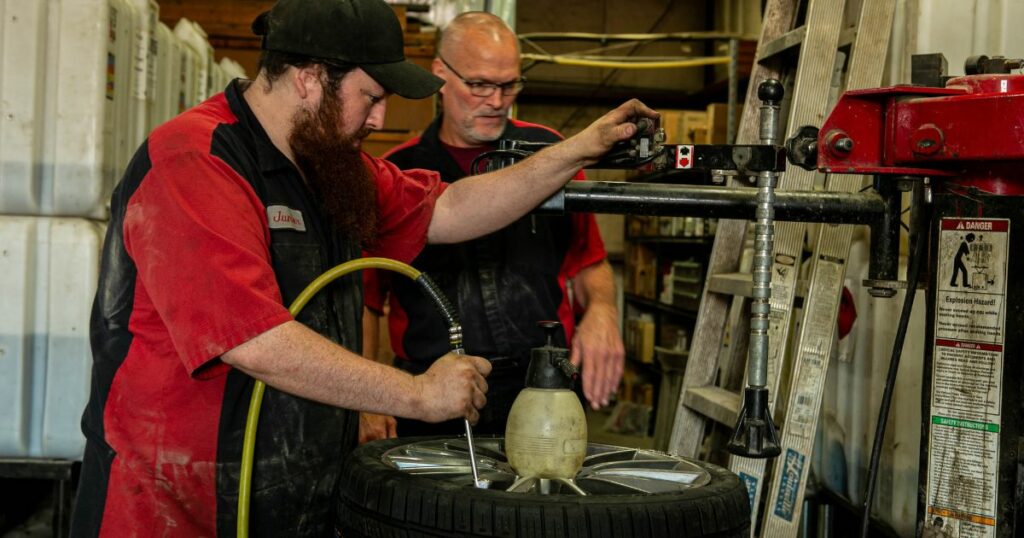
The Importance of Wheel Alignment: Do I Need One?
Identifying whether your vehicle needs a wheel alignment is essential for maintaining optimal performance. Keep an eye out for these tell-tale signs:
- Vehicle Pulling: If your vehicle pulls to the left or right when you’re steering straight, it’s a clear indication of alignment issues.
- Crooked Steering Wheel: When your steering wheel is off-center, even when driving straight, it’s time to have your alignment checked.
- Uneven Tire Wear: Check your tires for abnormal wear patterns. Uneven wear can be a result of misaligned wheels.
- Difficulty Steering: If you find it harder to steer your vehicle, especially around corners, it may be due to poor wheel alignment.
- Vibrating Steering Wheel: A vibrating or shaking steering wheel could be a sign of misaligned wheels.
- Lack of Control: If you feel like your vehicle is wandering or lacking control when you steer, it’s crucial to get your alignment checked.
When Should I Get My Tires Aligned?
To maintain optimal alignment and ensure your safety on the road, our expert mechanics at Country Tire recommend getting your wheel alignment checked and adjusted every 6,000 miles.
A convenient time to have this done is during your regular oil change service. By incorporating wheel alignment into your routine maintenance, you can keep your tires performing at their best, improve handling, and eliminate any pulling or vibrating issues.
The Importance of Wheel Alignment: Understanding Camber, Toe, & Caster
When our technicians perform a tire alignment, they focus on three key angles that affect your vehicle’s performance:
Camber
Camber refers to the inward or outward angle of the tire when viewed from the front of the vehicle.
Excessive inward or outward tilt, known as negative and positive camber, respectively, indicates misalignment and requires adjustment.
Toe
Toe alignment refers to the extent to which your tires turn inward or outward when viewed from above.
Proper toe alignment ensures even tire wear and better handling. Toe-in alignment means the tires angle inward, while toe-out alignment means they angle outward.
Caster
Caster angle affects steering, stability, and cornering. It’s the angle of your steering axis when viewed from the side of your vehicle.
A positive caster tilts the steering axis toward the driver, while a negative caster tilts it toward the front of your vehicle.
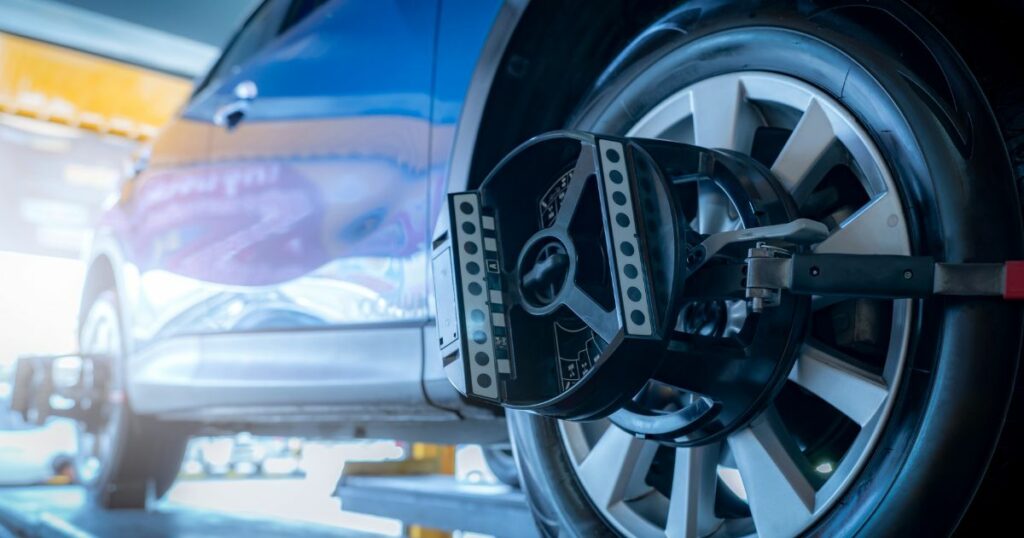
The Importance of Wheel Alignment: Why it Matters
Proper wheel alignment is vital for maintaining even tread wear and maximizing the lifespan of your tires. Here are some common types of tread wear associated with misalignment:
Feathering
Tires appear “feathered” when the tread is smooth on one side and sharp on the other, indicating poor toe alignment.
Camber Wear
Excessive wear on the inside or outside of the tread is a result of positive or negative camber misalignment.
Heel/Toe Wear
This type of wear, occurs when one side of the tread block wears down more quickly, resembling saw teeth when viewed from the side. Heel/toe wear can be a sign of underinflation and lack of rotation.
Preventing premature tread wear is a compelling reason to prioritize wheel alignment.
Additionally, misalignment can impact overall vehicle performance, leading to a car that pulls to one side or steers erratically.
By ensuring your wheels are properly aligned, you’ll enjoy a smoother, safer, and more enjoyable driving experience.
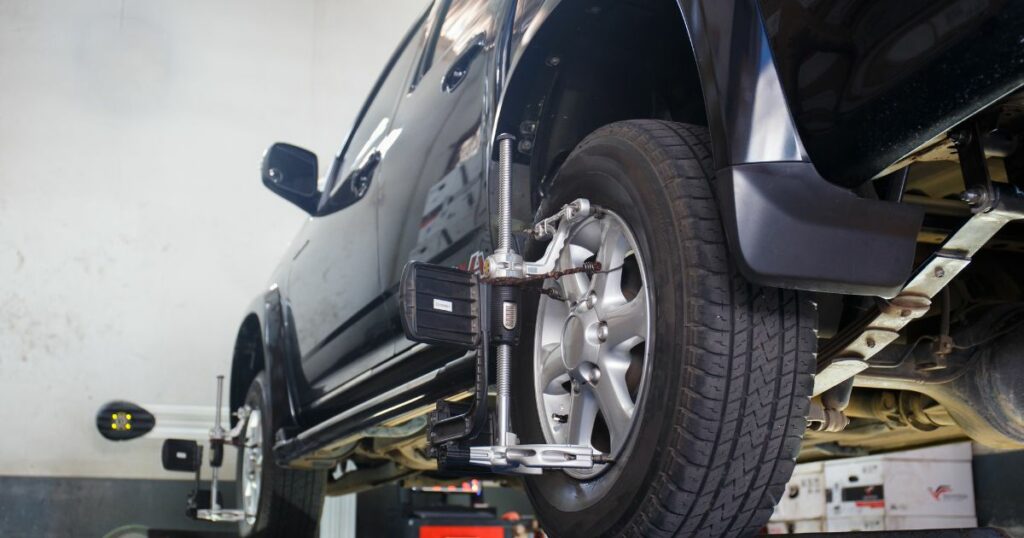
Tire Balancing: A Complementary Service
In addition to wheel alignment, tire balancing is another critical aspect of proper tire care.
It addresses weight imbalances in the tire/wheel combination, reducing vibrations and ensuring a smooth ride.
Tire balancing is often performed in conjunction with wheel alignment to maximize tire performance.
Now that you understand the importance of wheel alignment don’t overlook this crucial service for your vehicle.
By regularly checking and adjusting your wheel alignment every 6,000 miles, you can extend the life of your tires, enhance vehicle safety, and improve overall performance.
Trust the experienced team at Country Tire Automotive to provide exceptional wheel alignment services along with a comprehensive suite of automotive solutions.
Visit our website to learn more about our services and take advantage of our convenient online service appointment request form.
Take control of your vehicle’s health today and experience the difference of expert wheel alignment from Country Tire Automotive.
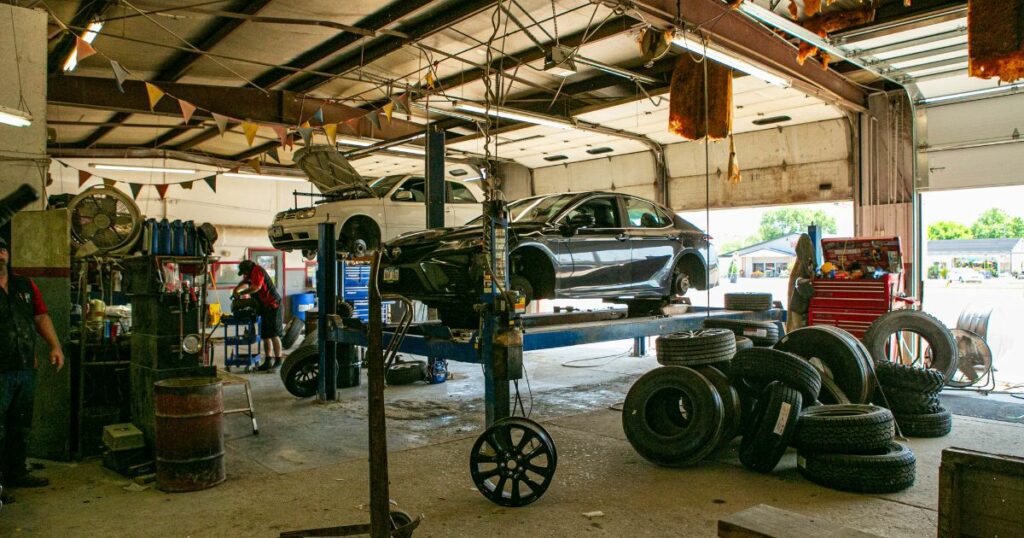
FAQs – The Importance of Wheel Alignment: Your Questions Answered
At Country Tire Automotive, we understand that our customers may have questions about wheel alignment.
To help you better understand this essential service, we’ve compiled a list of frequently asked questions that we often receive from our customers at Country Tire Automotive.
Read on to find answers to your wheel alignment questions and gain valuable insights into the benefits of maintaining proper alignment for your vehicle.
Frequently Asked Questions
1. How often should I get my wheels aligned?
At Country Tire Automotive, we recommend getting your wheel alignment checked and adjusted every 6,000 miles or as part of your regular oil change service. This frequency helps ensure optimal performance and safety on the road.
2. Can wheel alignment issues affect fuel efficiency?
Yes, misaligned wheels can impact fuel efficiency. When your wheels are out of alignment, it causes additional resistance and strain on your tires, resulting in decreased fuel efficiency.
Proper alignment can help optimize fuel economy and save you money at the pump.
3. How long does a wheel alignment service take?
Typically, a wheel alignment service at Country Tire Automotive takes around 1 to 2 hours, depending on the specific vehicle and any additional adjustments required.
Our skilled technicians work efficiently to minimize wait times and get you back on the road as soon as possible.
4. Will a wheel alignment fix my vehicle’s pulling or drifting issues?
Yes, wheel alignment can often resolve pulling or drifting issues.
When your wheels are properly aligned, it ensures even tire contact with the road, reducing the tendency for your vehicle to pull to one side.
If you’re experiencing pulling or drifting, getting a wheel alignment is an essential step to regain control and improve handling.
5. Can I align my wheels myself using a DIY method?
While there are DIY methods available for wheel alignment, we highly recommend leaving this task to the professionals.
Wheel alignment requires specialized equipment and expertise to accurately measure and adjust the angles of your tires. Trusting our skilled technicians ensures precise alignment for optimal results.
6. How can wheel alignment improve tire lifespan?
Proper wheel alignment helps distribute the vehicle’s weight evenly across all tires, reducing uneven wear patterns and extending tire lifespan.
By preventing premature wear and tear, wheel alignment saves you money in the long run by maximizing the longevity of your tires.
7. What are the signs of improper wheel alignment?
Signs of improper wheel alignment include uneven tire wear, a crooked or off-center steering wheel, vehicle pulling to one side, difficulty steering, a vibrating or shaking steering wheel, and a lack of control or wandering sensation when steering.
If you notice any of these signs, it’s essential to have your alignment checked.
8. Can wheel alignment affect my vehicle’s suspension?
Yes, wheel alignment can affect your vehicle’s suspension system. Improper alignment can place additional stress on suspension components, leading to premature wear and potential damage. Regular wheel alignment helps maintain the health and longevity of your suspension system.
9. Is wheel alignment covered by my vehicle’s warranty?
Typically, wheel alignment is considered regular maintenance and is not covered by most vehicle warranties. However, it’s important to review your warranty documents or consult with your vehicle manufacturer for specific coverage details.
10. Can wheel alignment improve my vehicle’s overall performance?
Absolutely! Proper wheel alignment enhances overall vehicle performance. It improves handling, steering response, and stability, providing you with a smoother and more enjoyable driving experience.
Additionally, by ensuring your vehicle is performing optimally, you can maintain better control and safety on the road.
We hope these frequently asked questions have provided valuable insights into the importance of wheel alignment.
Don’t hesitate to reach out to the expert team at Country Tire Automotive if you have further questions or would like to schedule a wheel alignment service.
Experience the difference of our exceptional service and let us help you keep your vehicle running at its best. Schedule an appointment today.
